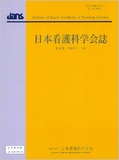Japanese
English
- 販売していません
- Abstract 文献概要
- 参考文献 Reference
要旨
目的:神経難病患者の診断期に関わる大学病院看護師の拡大代替コミュニケーション(Augmentative and Alternative Communication:以下,AAC)の認知度と使用経験の実態を明らかにすること.
方法:全国の大学病院の脳神経内科病棟看護師584名を対象に自記式質問紙調査を行い,AAC11種の認知度と使用経験を尋ねた.知っているAACの個数を認知度得点とし,属性との関連を分析した.
結果:27病院から有効回答313部を得た.全AACを知っている看護師は1名のみで,全体の平均は4.40±2.38種であった.生体現象方式は2.2%と低かった.AAC認知度得点には,病棟経験年数,病名告知への同席,AACの研修(p < .001),訪問看護の経験(p = .005)で有意差を認めた.
結論:大学病院看護師のAACの認知度は全体に低く,使用経験が少ないことが明らかとなった.患者の疾患の受け止め状況に合わせて適切な意思疎通手段を提案できるよう学びを深めることが求められる.
Aim: To clarify the status of Augmentative and Alternative Communication (AAC) recognition and experience among university hospital nurses working for patients with intractable neurological diseases.
Method: We conducted a questionnaire survey among 584 nurses in the neurology wards of university hospitals across Japan to ask about the recognition and experience of using 11 types of AAC. The sum-up number of AAC known was used as the recognition score, and the relationship with nurses' characteristics was analyzed.
Result: Three hundred and thirteen valid responses were received from 27 hospitals. Only one nurse knew 11 types of AAC. The overall mean was 4.40 ± 2.38. Only 2.2% had experience with the Biological phenomenon method. Significant differences in AAC recognition scores were found for years of experience in hospital wards, disease notification attendance, training on AAC (p < .001), and home nursing experience (p = .005).
Conclusion: Nurses at university hospitals have a low recognition of overall AAC and little experience in its use. They must learn more to propose appropriate means of communication while considering a patient's perception of their disease.
Copyright © 2022, Japan Academy of Nursing Science. All rights reserved.


